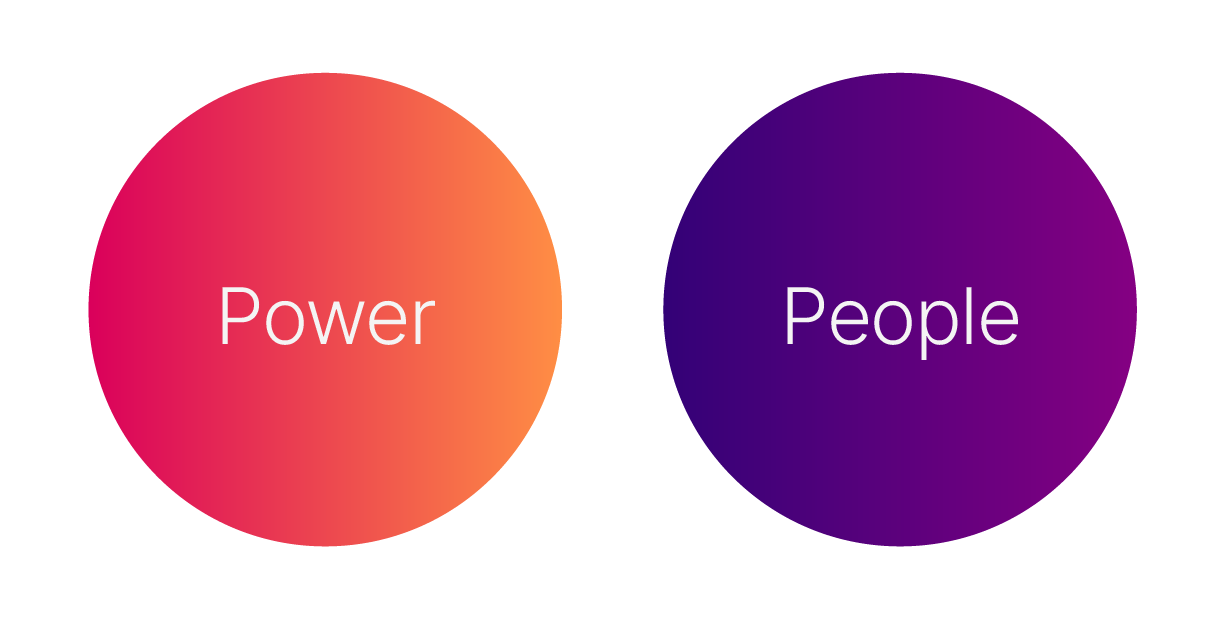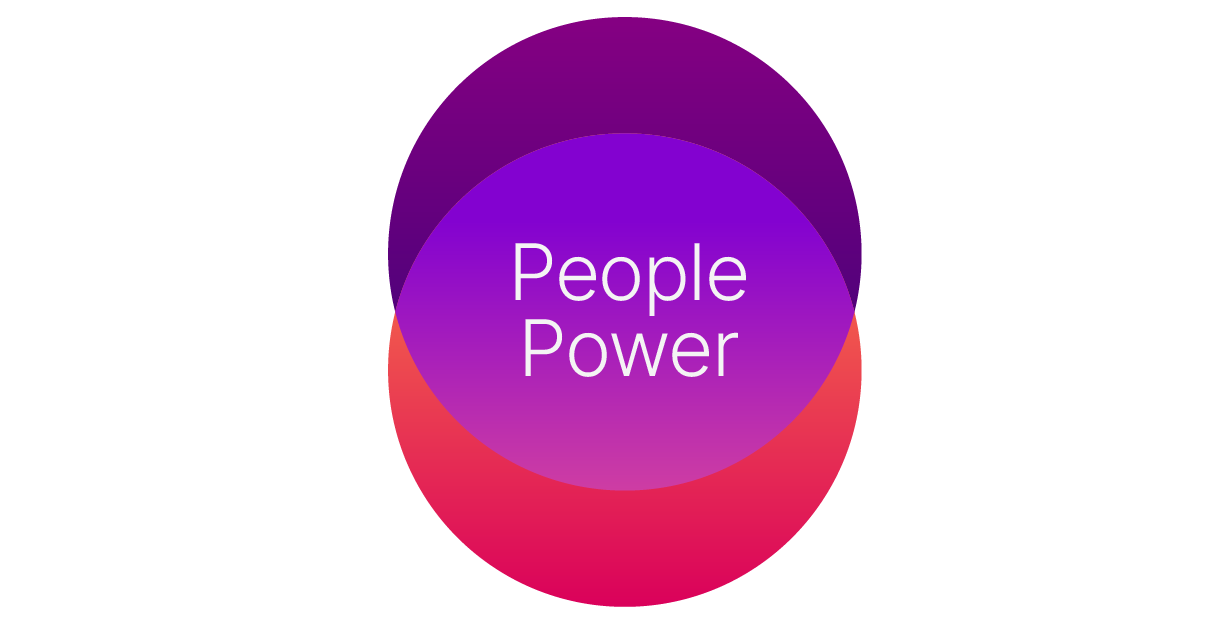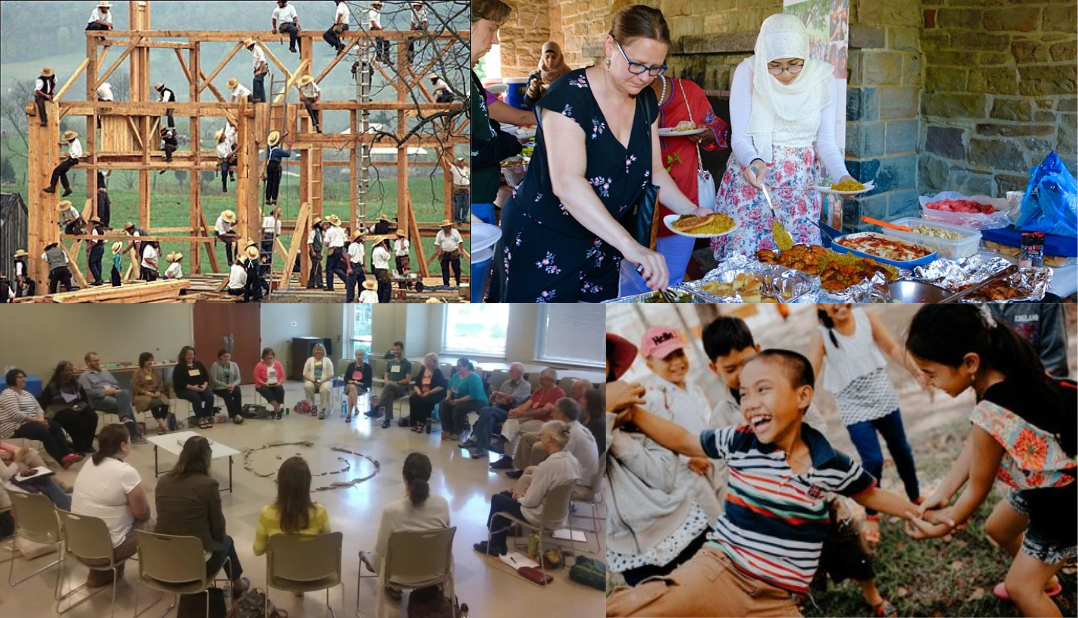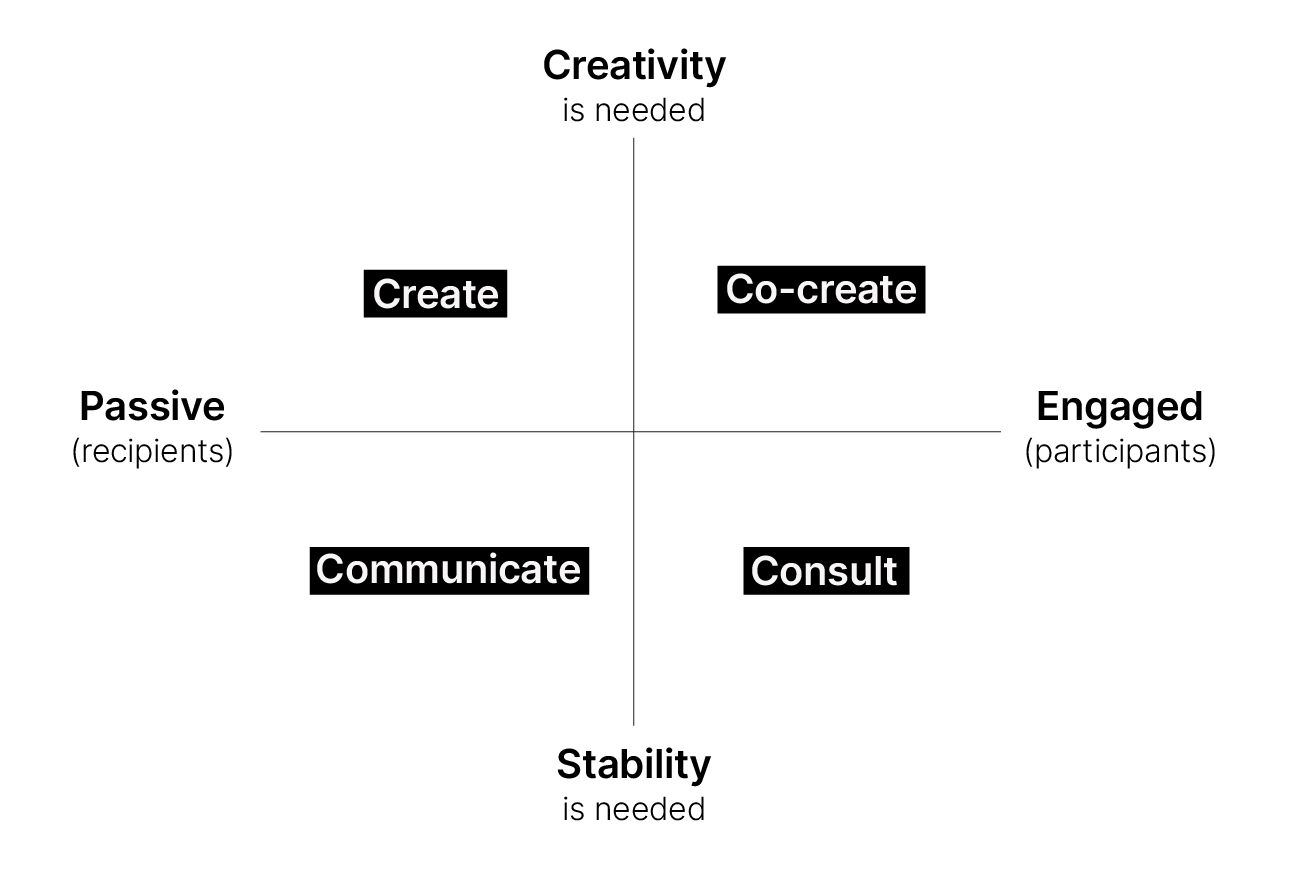hi
ARTICLE
Co-creation
Working together with our communities
By Kevan Gilbert
“For the world to heal, we must learn to work together.”
That phrase is one of the guiding lights that emerged on our entrepreneurial journey to launch Co.school; it’s now our purpose statement.
When we say work together, we mean co-create: together is “co,” and to work is to create.
Co-creation might hit you like a jargony buzzword or cliche, but don’t rush past it. There is a power in this concept that can change how we show up for ourselves and each other, and how we evolve our systems.
And speaking of power, that’s really where it all starts.
That phrase is one of the guiding lights that emerged on our entrepreneurial journey to launch Co.school; it’s now our purpose statement.
When we say work together, we mean co-create: together is “co,” and to work is to create.
Co-creation might hit you like a jargony buzzword or cliche, but don’t rush past it. There is a power in this concept that can change how we show up for ourselves and each other, and how we evolve our systems.
And speaking of power, that’s really where it all starts.
What do we mean by co-creation?
When decisions are made in our world, it’s frequently from a seat of power. This might be an executive chair, a board room, or a government office. Power can be wielded by any type of leader who can make a declaration and expect it to be carried out (including parents of young children).
Meanwhile, ideas themselves—the directions we could take—originate inside people. Ideas come from within people of all walks of life, not just the ones who happen to be in power.
Yet isn’t it true that so often, there’s a gap between people and power?
Yet isn’t it true that so often, there’s a gap between people and power?

Co-creation seeks to bring those two together:

I think of co-creation as a “people-powered innovation process.” It’s about shrinking the gap between people and power, so that the voices of the people are reflected in the decisions that get made, in a way that helps all to flourish.
Work that is co-creative might also go by other, familiar descriptions:
Involving others
Cooperative
Collective
Participatory
Community-driven
Relational
Co
There is a long list of actions we take when we come together in these ways:
Making
Building
Thinking
Design
Decision-making
Engagement
Strategy
Playing

Throughout history and across cultures, co-creation has looked like the act of people coming together to share: to share stories, to share food, to share ideas, to share labour. It has looked like potlucks and barn-raisings, circle practice, and tag. It’s the act of building a better experience with one another’s contributions.
Anywhere that relationships exist—in partnered couples, between children, or among friends—co-creation is happening as information gets exchanged to build new meaning and possibilities. As a sketch on my wall by Hugh McLeod reads: “All creation is co-creation.”
Co-creation: for when communities need creativity

Co-creation isn’t a natural fit for every type of work, in every type of situation.
Sometimes, we need to simply create. You might have a community that is somewhat passive: they’re not in a space where they are able to meaningfully engage. If that’s the reality, but creativity is needed, it’s often the time for individual creativity and contributions. This might look like individual artistic exploration, or specialized research and development. An individual creates or articulates a concept, and the community of users (citizens, members, consumers) receives it. This is the realm of your standard “inventor” story.
There are risks here, though, aren’t there? When a solo creator comes up with a concept, there can be a spark of friction when the idea is presented to a group. Sometimes the contribution will be well-received, and other times, it will be greeted with silence—and occasionally with backlash.
Sometimes, we need to communicate. Occasionally, instead of creativity or newness, what’s needed is stability: a decision, direction, or pathway. In this context, we might see an edict come down from “on high” as an executive order is handed down. This mode of hierarchical leadership is not inherently bad, but it does pose risks. What if the community’s needs and hopes clash with the direction being communicated? Most of us are familiar with this scenario, and know the challenges well.
Consultation can occur when a community is seen to have a certain level of openness to engagement. Opinions and needs are present. Participation is desired. In these spaces, to keep a community engaged but still maintain the sense of stability, consultation can create the space for semi-meaningful involvement. It gathers a few perspectives on the change being imposed. But beware the disingenuous consultation: it can lead to further disempowerment and disenfranchisement.
It’s here that the door can be opened for true co-creation. A community must be able to truly engage in a participatory process for co-creation to be possible. And the group must be looking for new pathways. Put most simply: when a community really cares, and when creativity is needed, try co-creation. Co-creation is for communities who are invested in the work of finding new futures.
Today’s systems are opposed to co-creation.
“We don’t need to talk to our customers. We already know what to do.”
“Leadership has decided…”
“We don’t want just fun and games.”
“We’ll be the proxy for the community’s voice.”
“What, you’re going to sit in a circle and sing Kumbaya?”
“This feels too much like therapy. We just need the work done.”
“We don’t have budget for user engagement.”
“We can’t take the time to ask our members.”
These are all, verbatim, phrases I’ve heard over the years that organizations have used to express fears, worries, and concerns regarding co-creation.
In some sense, you can imagine people simply locating themselves on the decision-making grid: they are simply noticing a different need, and naming it. Co-creation isn’t for every situation. That’s a good thing.
And yet, statements like these are often where our systems and organizations choose to needlessly walk away from co-creation. When these responses emerge from discomfort, habit, or hierarchy, we lose valuable opportunities to engage and to listen. When an organization says “no” to co-creation in a situation that really needs it…it’s a significant loss.
Many of our organizations—from our governments to healthcare to places of education—emerged in an era when top-down leadership was the de facto mode of operating, command-and-control hierarchies were the rule of the day, and colonial ways were well-established. It is certainly possible to unlearn these tendencies, evolve into collaborative methods, and choose ways that embrace cooperation and partnership. But there are years (or in some cases, generations and centuries) of old, accumulated habits and policies that are still present, active, and operating—and which are the opposite of co-creative.
The consequences are devastating.
I recently asked a gathering of members from the Government of Canada: “What are the consequences of leadership structures that don’t co-create?”
I was asking what happens when leaders don’t listen? When communities don’t collaborate? When groups don’t work together? What happens when our collective intelligence goes ignored?
The answers were illuminating; participants offered words that painted quite a picture of what happens when co-creation is ignored in our workplaces, governments, and cultures. I gathered their perspectives and built out a synthesis. Here’s what happens when we don’t co-create:
- Stagnation. The status quo continues, without new ideas.
When we do not co-create, creative potential, new ideas, and great opportunities are lost, ignored, or squandered. The absence of vision creates thoughtless perpetuation. The status quo will continue. - Suffocation. People suffer from being unheard and unvalued. When we do not co-create, folks feel a greater sense of disengagement, alienation, resistance, and dissatisfaction. People lose interest and motivation when they feel unheard and unvalued. As one participant wrote, “People feel smaller and smaller every day.”
- Division. We set up “us vs. them” divides.When we do not co-create—when top leaders continue to make all the decisions—we set up “us vs. them" divides. Polarities increase, and trust diminishes, creating greater hostility.
- Exclusion. Voices are lost. A gap grows between power & people. Structures that do not co-create will only be able to offer services that reflect a limited range of experiences and needs. People are excluded, voices are lost, and a disconnect grows between power holders and the people.
- Extinction. We lose our ability to adapt to change.When we are not aware, open, nimble, and trusting enough in our structures to co-create, we lose our ability to adapt to change. As one participant said, we “lack the ability to respond efficiently to unprecedented situations.” We’ve closed our ears to new input and information, and are perpetuating pre-chosen outcomes. The stagnation, suffocation, division, and exclusion leads to an inevitable outcome: extinction.
It’s a pretty dire reality. And unfortunately, it’s one we are likely beginning to recognize all around us.
Yet, the potential is life-saving.
Each one of these destructive consequences has a corresponding, revolutionary reframe. When we flip these statements to their “abundant opposite,” we can imagine a world where co-creation cultivates conditions of flourishing. The potential impact of leadership structures that do co-create would be a world of:
- Innovation. We discover new ideas that will shape the future.
- Liberation. As people feel heard and valued, they flourish freely.
- Connection. We come together, breaking down “us vs. them” divides.
- Inclusion. Voices are heard, and power is distributed.
- Evolution. We adapt to change, and renew our species and planet.
It’s a beautiful reverse-apocalypse. A vision of renewal that is worth striving for. And yet, it raises the question…is it even possible?
Zoom out to see the bigger picture
It’s not just possible, it’s already happening. Acts of co-creation—where people with unlikely and oppositional viewpoints come together to share perspectives and build new worlds—take place regularly against all odds. We see it when we facilitate collaborative design sprints with non-profits and municipalities. I witness it when I’m part of creative play with my kids. We read it in the data of studies that are reaffirming the power of co-creation for transformation and innovation. You’re a participant when you engage in a creative, vulnerable negotiation with your partner. It’s happening on micro and macro scales, in commerce, and in community.
More than simply being theoretically possible, co-creation is already being used to help communities live into renewed futures. And stepping into what co-creation offers gives us a chance to practice an even greater shift that’s taking place in our current era.
We are presently within a shift between two modes of operating. As Charles Eisenstein articulates in his book, The More Beautiful World Our Hearts Know Is Possible, there’s the old story, and the new story.
| The Old Story | The New Story |
| Hierarchies | Network |
| Dominance | Partnership |
| Transactional | Relational |
| Separateness | Interconnectedness |
| Mechanistic, linear | Organic, quantum |
Co-creation is part of the work that helps our systems, organizations, teams, and individual selves move from the Old Story to the New Story.
We are unlearning ways that were primarily mechanistic and imposed upon nature, returning instead to ways that are organic—where nature’s capacity is acknowledged and welcomed. This is a healing act, returning to a relationship with the land and its stewards, and partnering anew in the work of restoration and relationship-building. The work of co-creation, when done in genuine partnership, is the work of helping our societal systems shift to become more integrated as a whole. It is through the work of honouring one another’s stories and perspectives, bringing our true selves to the conversation, and constructively seeking a shared and sustainable future, that we will uncover opportunities for mutual thriving.
It won’t be easy, but by moving through the resistance, choosing rest as needed, and honouring our own needs, we can find a path forward to a new way of living.
“Another world is not only possible, she is on her way.
On a quiet day, I can hear her breathing.”― Arundhati Roy
hi


